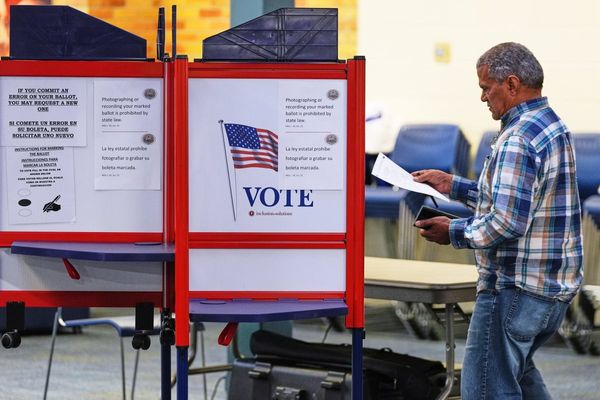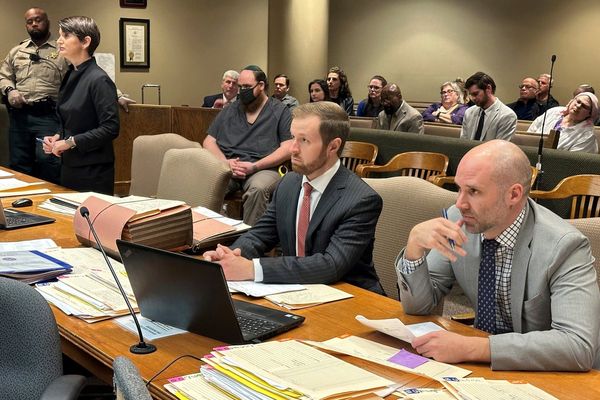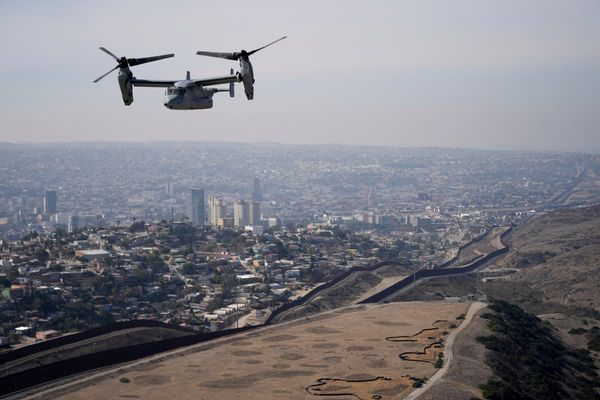
Before the floods from Hurricane Katrina ravaged the city of New Orleans 20 years ago, Franklin Avenue Baptist church was booming.
“We had three morning services. We had a gymnasium, overflow rooms. Next door was the family center. There was an exercise room and library,” said the Rev Fred Luter Jr, pastor of Franklin Avenue. “We had just bought 90 acres of property. We were the talk of the town.”
Then, on 29 August 2005, Hurricane Katrina made landfall along the Gulf coast and the levees broke in New Orleans. More than 80% of the city flooded, destroying homes, businesses and historic cultural institutions. More than 1,800 people died, as more than 1 million people along the Gulf coast were displaced and damages soared beyond $120bn.
As the nation reflected on the 20th anniversary of Hurricane Katrina and the devastation it wreaked on the Crescent city, there were also memories of resilience and rebuilding, of hope and healing. For some, these came in the form of being in a religious dwelling. Following the hurricane, two churches came together – the predominantly Black Franklin Avenue Baptist and First Baptist New Orleans, a predominantly white church – to provide not only a space for worship, but also offer a sense of community for traumatized residents trying to gain a sense of normalcy after the deadly floods.
In the days and weeks after Hurricane Katrina, there was no electricity in the city and the national guard would allow only emergency workers on the streets, Luter said. Media images from 4 September 2005, nearly a week after Hurricane Katrina touched down on New Orleans, showed residents still being rescued from rooftops and from the tops of flooded cars.
It would be a good two months before the city started allowing people to check on their properties. Those who returned had to go through a checkpoint with police officers.
Luter, who had evacuated to Birmingham, traveled back to New Orleans to assess the damage done to Franklin Avenue.
“We had 9ft of water. Everything was completely destroyed on the first floor. The entire first floor was completely damaged,” he remembered. “I cried. The stench was unbelievable. Pews turned over, the organ, musical instruments. It was something I will never forget as long as I live.”
There was a sign tacked on the front door of the church: “Rev Luter. Pastor Young. Where are you? We miss you.”
“I wish I would have kept that sign,” said Luter.
Franklin Avenue members, who numbered roughly 7,000, were scattered. The pastor had difficulty contacting parishioners. Cellphones weren’t working. The internet was down and it would be months before the church website was up again.
What he thought would be a couple of days in Birmingham turned out to be seven months, Luter said. He held worship services in Baton Rouge on the first and third Sundays and drove to Houston on the second and fourth Sundays – the two cities where many of his parishioners had evacuated.
Then, Luter said, once the church website was back up, he started getting messages from Franklin Avenue members who lived on the city’s West Bank, which hadn’t flooded. They wanted church services, too.
He called David Crosby of First Baptist New Orleans and told him Franklin Avenue was looking for a place to have worship services on Sunday mornings. The Rev Crosby told Luter that First Baptist “would be glad to have you”.
First Baptist New Orleans, with a white, middle-class congregation, had moved to a new multimillion-dollar building in June 2004, a little more than a year before Hurricane Katrina. Nearly two weeks after the storm, a friend helped Crosby get in touch with a helicopter pilot who flew him to New Orleans from Corsicana, Texas. They flew along Lake Pontchartrain and surveyed the devastation. The city was still full of water, said Crosby.
“It was a disaster of indescribable proportions,” said Crosby. “If you weren’t there, it’s like trying to describe a battlefield or something. It was surreal. I wondered at the time if the city would ever recover.”
National guard members with lights on their rifles escorted Crosby into the First Baptist building. About 30 people had set up camp there.
“There was a lot of the building that was not damaged,” Crosby said. “The second floor of the education building, the auditorium, was a mess. There was water pooled in the front. All of the conduits that ran microphone lines and electrical lines were full of water, from the standing water in the music suite and all of that. There was damage in the fellowship hall. It was a mess.”
Though First Baptist New Orleans didn’t have as much damage as Franklin Avenue, the building suffered $3m in structural damage, said Crosby, “and of course we didn’t have phone service, internet service, electricity”. The church had to use a borrowed generator to “run a hundred fans to suck the water out of the air” and run the sound system.
The church had been set up as a distribution center for organizations such as the Red Cross, the Salvation Army and other disaster relief organizations, which used First Baptist’s parking lot to provide goods and services to displaced New Orleanians and volunteer groups. They were distributing bottles of water and boxes of food and serving hot meals.
First Baptist was having church services by October, and electricity had been restored by the time Luter called.
“Fred called me and said: ‘Is there any way we could meet at your church?’ And I said: ‘I’m sure there’s a way and we will figure it out,’” Crosby remembered. “The deacons and the church leaders were excited about hosting Franklin Avenue. We really didn’t think that much about color. It was something we could do and wanted to do.”
They agreed Franklin Avenue would have their worship services at 7.30am, before First Baptist New Orleans’ Sunday school classes. What happened was a continuous flow of religious unity and togetherness. Members from First Baptist New Orleans attended Franklin Avenue’s service at 7.30, and those parishioners attended First Baptist’s 9.30am Sunday school classes. The women’s, men’s and health ministries of the two churches also held events together. The churches came together for vacation Bible school, and office space at First Baptist New Orleans was offered as Franklin’s sanctuary was being renovated.
“I never had anybody push back on it. Nobody said, we shouldn’t be doing this. I don’t remember a soul who was anything like that,” said Crosby, who is now pastor emeritus of First Baptist New Orleans. “And that partnership grew.”
In 2012, Crosby nominated Luter to become president of the Southern Baptist convention. Luter was elected unanimously, becoming the first Black man to lead the organization in its 167-year history.
That historic partnership was remembered during a joint worship service on the 20th anniversary of Hurricane Katrina. The service was led by the Rev Chip Luter, Luter’s son, and the Rev Chad Gilbert, current pastor of First Baptist New Orleans. The service was attended by city dignitaries including several city council representatives, and a representative from the mayor’s office presented Luter and Crosby with keys to the city in honor of their joint worship services after Hurricane Katrina.
“You brought us together in the wreckage,” said Jack Hunter, executive director of the New Orleans Baptist Association, of the two churches working together in the aftermath of Katrina. “You brought us into a community of shared loss and hope.”
Elizabeth Luter, wife of the Rev Fred Luter and first lady of Franklin Avenue Baptist church, said that she no longer talks about what she lost during the storm, but what she found after Hurricane Katrina: “generosity, endurance and dedication”.
“One of the things that we did together was we crossed over racial and economic barriers to demonstrate the love of Jesus,” Elizabeth Luter said of the Franklin Avenue and First Baptist partnership.
Franklin Avenue and First Baptist members worshipped together for two-and-a-half years. Franklin Avenue reopened its church building for worship services on the first Sunday in April 2008. It was a standing-room-only crowd.
“Katrina did something in our lives. There was hurt. There was pain. There was loss. There was fear,” said Luter. “On Sunday morning, we can be uplifted, encouraged, be revived, in church. It gives us hope, inspiration. We need each other. The church is vital.”







